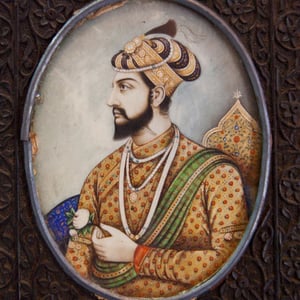INDIA :
Ian Sansom on a clan whose empire became synonymous with India

In the month of Ramadan of the year 899,” writes the great Babur (1483-1530) in his autobiography, The Baburnama, “and in the 12th year of my age, I became ruler in the country of Fergana.” Babur – his name means “tiger” – inherited the tiny kingdom of Fergana, in what is now Uzbekistan, from his father. The family was descended from Genghis Khan and Tamerlane the Great; Babur the boy-king became the first of the Mughal emperors, a family of Turko-Mongol rulers who, according to the historian Abraham Eraly, “so decisively stamped their personalities on India that the Mughal Empire became, in the public perception, synonymous with India.”
Babur established his empire through conquest, successfully invading India in 1526. His son, Humayun (1508-1556), who succeeded him, came close to losing everything that his father had achieved. It wasn’t until the rule of Akbar (1542-1605), Humayun’s son, that the Mughal Empire was consolidated. Akbar, like Margaret Thatcher, slept only four hours a night. When he was awake, which was most of the time, he set about expanding the Mughal territories abroad and reforming the government at home. He ended the tax imposed on non-Muslims. He invited Jesuit missionaries into his court. And he formed his own religion. Above all, he knew how to make friends as well as enemies. According to his court historian, Abul Fazl, “His majesty forms matrimonial alliances with princes of Hindustan and of other countries; and secures by these ties of harmony the peace of the world.”
Jahangir (1569-1627) succeeded his father, Akbar, in 1605. He preferred to drink and carouse rather than to rule, and his wife, Nur Jahan, took on the responsibility of the state. The fifth Mughal emperor, Shah Jahan (1592-1666), was more like his grandfather Akbar and his great-great-grandfather Babur: a schemer, a man of grand plans and ideas. When his wife, Mumtaz, died in 1631, Shah Jahan was grief-stricken, so much so that, according to one observer, he “gave up the practice of plucking out grey hair from his beard”. He also decided to build his wife a memorial. The English travel writer Peter Mundy described the construction: “The building is begun and goes on with excessive labour and cost, prosecuted with extraordinary dilligence, Gold silver esteemed common Mettal, and Marble but as ordinarie stones.” According to Rudyard Kipling, the place was “the embodiment of all things pure, all things holy, and all things unhappy”. It was the Taj Mahal.
Shah Jahan’s rule ended with a war of succession between his sons, in which Aurangzeb (1618-1707) emerged triumphant. Having killed his brothers, he imprisoned his father. After Aurangzeb the decline of the Mughals began. In 1738, India was invaded by the forces of Nadir Shah, ruler of Iran. Territories were divided. Then the British East India Company moved in.
The last of the long line of Mughal emperors was Bahadur Shah II, known as Zafar. “Personally, he was one of the most talented, tolerant and likeable of his dynasty,” writes William Dalrymple in The Last Mughal (2006). The first emperor, Babur, had been a warrior. Zafar was an aesthete – a poet and an architect. Alas, empires tend not to survive under aesthetes. “While the British progressively took over more and more of the Mughal Emperor’s power,” writes Dalrymple, “the court busied itself in the obsessive pursuit of the most cleverly turned ghazal, the most perfect Urdu couplet.”
Zafar died in exile in Rangoon in 1862. His courtiers were hanged and much of Mughal Delhi was destroyed. “The death of the ex-King may be said to have had no effect on the Mahomedan part of the populace,” wrote the British commissioner at the time, “except for a few fanatics who watch and pray for the final triumph of Islam.”
source: http://www.theguardian.com / The Guardian – International Edition / Home> Family> Great Dynasties of the World / by Ian Sansom / July 16th, 2019








